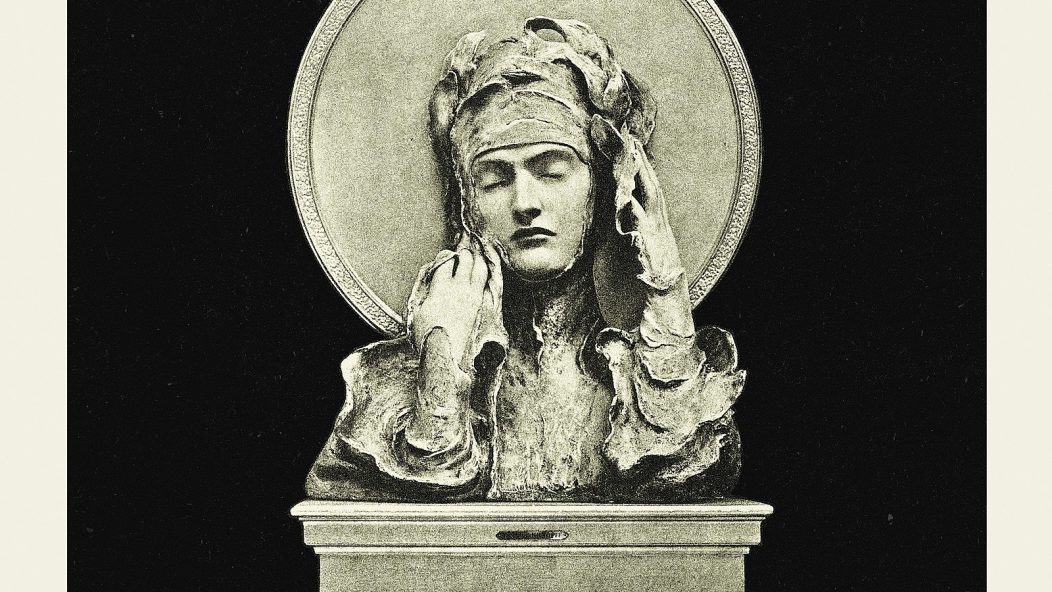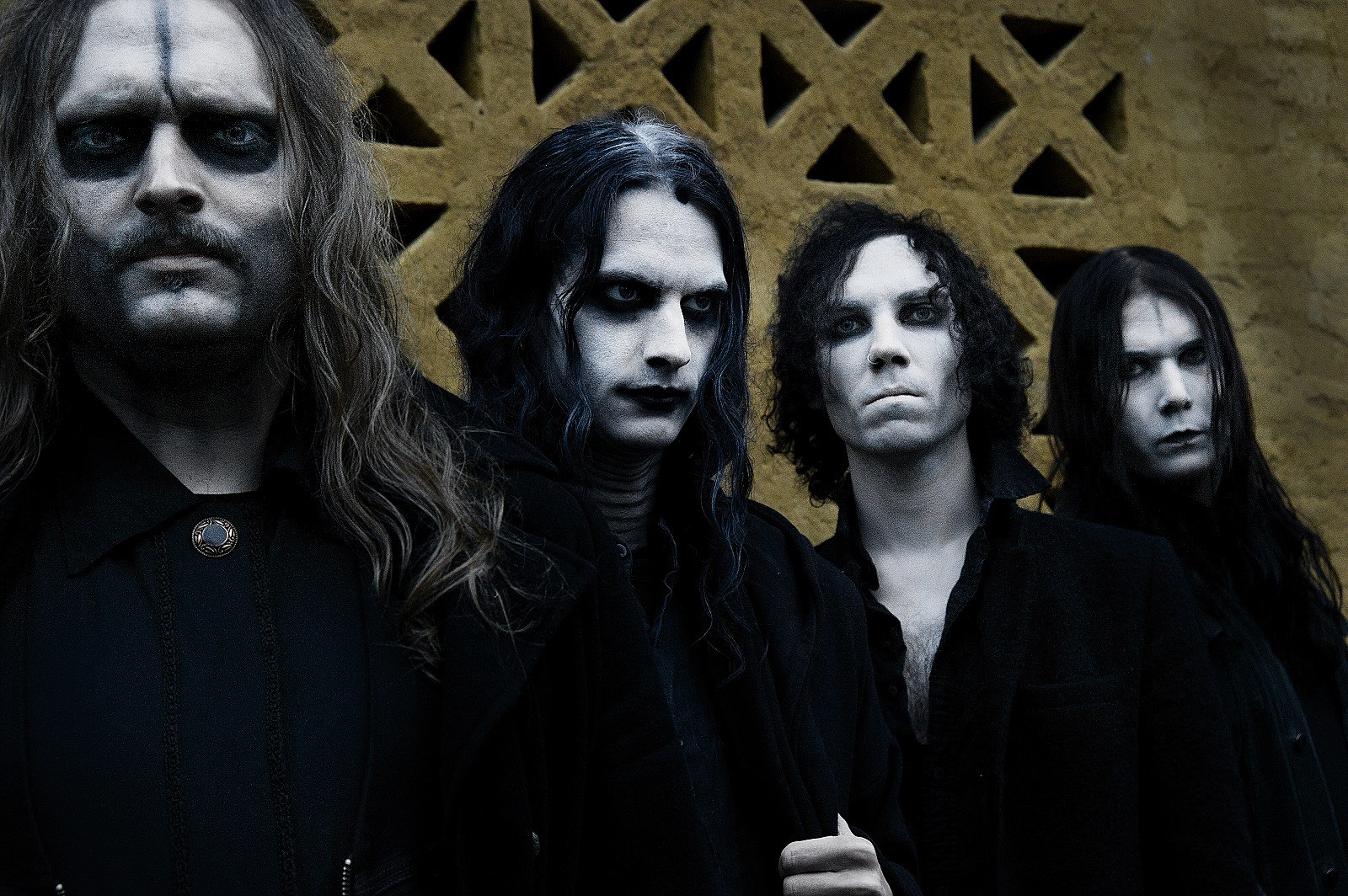
Tribulation Enters A Numinous Realm "Where the Gloom Becomes Sound" (Album Review)
One of the benefits to Tribulation‘s earlier records was their lack of expectation. It’s both admirable and joyous, somewhat, that The Horror, Tribulation’s debut, now seems quaint in retrospect. The band then was a group of gifted and energetic youths making crusty, old-school death metal years before the current boom took off. They were one of the three great bands born from the ashes of Stockholm’s Repugnant, a brief-lived but in retrospect hyperbolically talented crucible of young writers and players. Of those three, they were the most adherent to the cause of death metal. In Solitude shot toward a fusion of heavy metal and gothic music, developing into a chronologically-defiant proto-black trad metal band; Ghost, far and away the most visible act to be born from that earlier group, instead pushed toward an almost pop-rock sensibility. This left Tribulation, at least early on, to explore those guttural blood-splattered spaces they all had come from. Together, the three groups seemed to project outward rays of the three primary vectors that made Repugnant so exciting in the first place, each concentrating on a key aspect that felt like it elaborated on a secret shared musical world for those aware of the lineage of these players.
In Solitude blew up first in the underground, seeing near-immediate lionization off of the back of their debut LP and the EP released shortly thereafter. Ghost would rocket to superstardom shortly thereafter, going from an underground-approved debut to Pitchfork premiering the stream for their second album. The throughline between these two, a thing they shared and that debut Tribulation album largely lacked, was a keen sense of melody. It was not that they were lacking in riffs but rather that In Solitude and Ghost both viewed them as means to an end, focusing on hooks, synchronous arrangement and a group-oriented approach that betrayed the fundamental unspoken element of riff-oriented music: being largely single-instrument focused, where the song is contained in miniature in a guitar lick or a bassline. In Solitude and Ghost material, especially compared to the Tribulation of The Horror, was a much more group-oriented affair, each part perhaps coming across as spare or lacking in isolation but assembling to a vast macabre gothic portrait of some satanic rotting ruin inscribed with seemingly endless melodic and rhythmic hooks.
…
…
The modesty of the success of The Horror allowed a rather radical shift of ground for their second LP, The Formulas of Death, a record that took their considerable death metal chops and saw them dive headlong into extended prog and psychedelia-driven writing. Their melodies were still elliptical, choosing to pursue the endless evasion and broiling plume-like density of psychedelia over the direct anthemicism of their two peers from the bosom of Repugnant. But there was a noticeable power to this shift; seeing them live at this point of their career opening for Watain and playing before In Solitude (who were at the time touring for their final record Sister, though none knew at the time this was to be their last), you would see them take the stage in flared and dramatic makeup and costume more like a high-goth Kiss or a parade of gloomy Melmothian vampires rather than the leather-clad and ghoulish gothic death metal of their earlier days. There was an ecstasy to their playing, eyes closed and bodies swaying to these dense swirls of psychedelic death music, that matched the eerie power of the songs and melodies. That development time had paid off.
So it was not all that terrible a surprise to those who had been following the group that Children of the Night was as superlative as it was. As the years went on between Ghost, In Solitude and Tribulation, they grew closer together than they did further apart; one would become more effulgent and progressive while another would become more gritty and dark, one would embrace limitless melodies and strong hook-driven writing while another embraced having proper licks. Children of the Night seemed to be the eruptive gothic heart of that mode of songwriting shared by all three, a perfect blend of progressive rock, goth, death metal, black metal, traditional heavy metal, and a heaping dose of psychedelic and hard rock. The Children of the Night‘s success wasn’t just a sonic one either. First, there was the aesthetic success, the fine-tuning of logo and album cover, the immaculate liner notes, all of which bled sumptuous velvet, establishing a firm mood which seemed to be the very center of the Repugnant groups; if In Solitude was the reek of the corpse and crypt and Ghost was the ecstatic and almost jubilant danse macabre, Tribulation had transformed themselves into death mystics. This led to the second great success of Children of the Night; it established a firm language and conceptual core, making that final crossing artists strive for where their art becomes a bridge to something else, some experiential near-mystical psychological thing, like a magical spell or a religious rite.
The group certainly seemed to grasp the enormity of what they had made, as their past two records have been more refinements and adjustments to that same conceptual core rather a radical reinterpretation unlike the arc from their first to third albums. Where the Gloom Becomes Sound functionally acts as a close to a conceptual trilogy, one enacted not by the group’s intentions but instead the fickleness of lineups and creative lifespans. Jonathan Hulten, one of the group’s two primary songwriters, announced his departure in the leadup to the record’s release; the press release announcing his departure hit my inbox, for instance, less than three days after the record did. The split seems to have been an amicable one, but it is hard to imagine it was pleasant overall: having such an existentially destabilizing lineup shift coming precisely at the release of the record. It’s impossible to divorce that shadow fully from evaluating the record and situating it within the context of the band’s work. It’s an artist’s worst nightmare: a work that functionally cannot be evaluated purely on its own merits.
…

…
Fortunately, this kind of death of sorts fits comfortably within the general shape of the album-of-itself. Where the Gloom Becomes Sound completes an unspoken conceptual arc the band began properly on Children of the Night and which carried through onto Down Below. Children of the Night, with opener “Strange Gateways Beckon” and the gradually unfurling meditation on the missing feminine aspect of God and the threshold of death, read as the opening of those gateways. Its songs were drenched in mystery and ambiguity, the group deploying progressive strains and arrangements as a means of creating a sonic parallel to the inherent and profound mystery of death and death-experience. As such, it was a colorless and elementless record, one purely focused on that initiatory experience, the pure ecstasy of immersion in mystery. Down Below then rendered itself in gothic reds and blacks like fire and clay, painting itself as an avernal descent following the opening of that door. The conceptual and lyrical space was the same broad circle, but the focuses were more chthonic. The band has mentioned prior how elementalism plays a part in their writing; here it seemed obvious the elements of fire and earth were largely at play, the depths of stone and furnace of hell providing one exploratory passage through the realms of death. As a result, the music tuned itself to more dour and funembrous sounds, billowing out like a cloud of coal of dense ash rather than the absinthe and incense of Children of the Night.
Where the Gloom Becomes Sound closes out this trilogy in the realms of air and water, bright and triumphant where Down Below was tenebrous and glowering. Their time on the road with Ghost (those three bands always did seem to stick together) while touring for Down Below seems to have asserted itself over their songwriting; there is a greater sense of forwarded arena-sized melodicism, like the death metal equivalent of Journey or U2 or some absolutely enormous sounding group. These are still Tribulation songs, their taut mixture of arena rock, prog, death metal, goth rock and traditional heavy metal intact; they are just so much bigger now, like the time with Ghost whetted their appetites to have their music roared back at them by the voices of tens of thousands rather than gloomily intoned by the tens or perhaps hundreds of the club. The triumphalism and enormity of these songs is mirrored in their lyrical focus, here fixating on gods and figures of myth such as Inanna, one of the earliest gods of the archetype of Isis and Dionysus, returning enriched and broiling with magic from the watery realms of the dead.
…
…
The aquatic theme is furthered on tracks like “Leviathans” and “Lethe”, the first the name of an abyssal sea creature from numerous books of the Tanakh and the second the name of the river of forgetting within the underworld of Grecian antiquity whose waters wash away the memories of the revenants and shades of Hades. The airy theme stems more from the skyward thrust of these melodies, which seem much more explosively anthemic than before, no longer stewing in the coldness associated with the gothic but instead the ravenous delight of a figure like Nietzsche or Baudelaire at their most life-affirming. These are death hymns, yes, and they maintain a fixation on the mystical and transformative aspects of death, but Where the Gloom Becomes Sound enacts its own name by inverting the stormy internalisms of Down Below into triumphant hymnals. This completes the cycle begun on Children of the Night, initiated and passing through the trials and solitudes of the abyss to arrive at the ecstatic dawn of universal light. (A theatrical read, yes, but so are Tribulation.)
This climactic sense of triumph and conclusion of the epic mystical trek begun two records ago feels if any the perfect time for such a seismic shift in the band’s lineup. Hulten must in some sense view his work as complete with the group; he did, after all, stay through the writing and recording rather than departing beforehand. His replacement Joseph Tholl has played with the remaining guitarist in Enforcer before and with both the guitarist and bassist in an earlier incarnation of Tribulation under the name Hazard; this sense of familial continuity likewise eases the potential psychic stain of fatalism that a major lineup change can extratextually add to a record. The narrative fits, rendering Hulten in many respects the sojourning foolish spirit experiencing the tarotic insights of death meditation while the band remain as death-mystic psychopomps. This sense of coming sonic change from a new lineup of players and writers likewise eases any potential tension that may be felt about Where the Gloom Becomes Sound being perhaps a bit samey and safe; given that the sound is likely to change, that this is the last hurrah of this iteration of the band, its familiarity is something to rejoice in rather than bemoan as a lack of ambition. Where the Gloom Becomes Sound becomes the high bar for 2021, the crowning finale to one of the greatest runs in contemporary heavy metal by one of the greatest bands going for the past five years. It feels like the group’s own Crack the Skye, the finitem; for a band this extraordinarily gifted at making richly emotionally, spiritually, and imagistically evocative work, where they go from here is a seemingly boundless horizon.
…
Where the Gloom Becomes Sound released January 29th, 2021 via Metal Blade.











